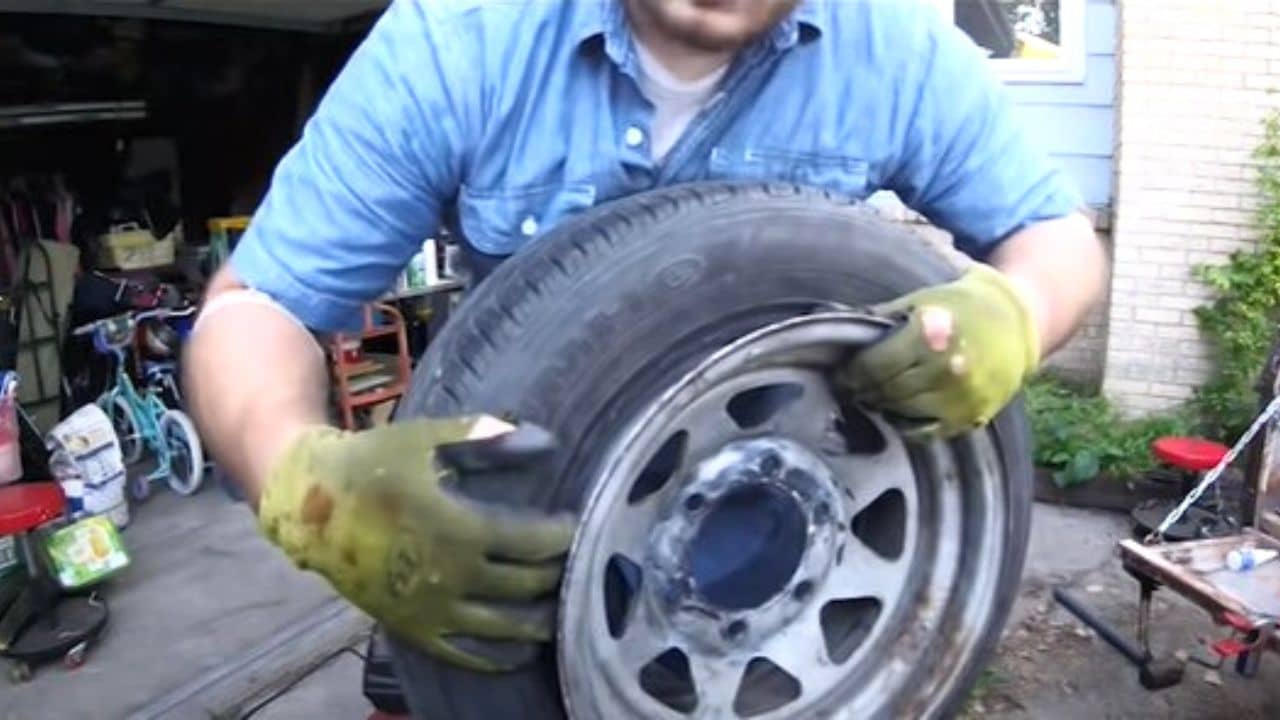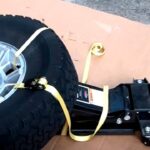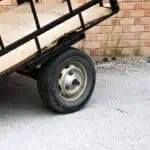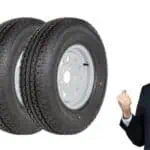Are you want to know about How to Seat a Tire Bead With Wd40? Yes, if you have ever had a tire come off its bead while driving, you know how dangerous it can be. Even if you are not moving very fast, the tire can quickly start to shred and cause serious damage to your vehicle. If you have a flat tire, it is important to know how to seat the bead before attempting to drive on it.
Seating the bead will help prevent the tire from coming off again and will also make it easier to change the tire later on.
- Clean the surface of the tire and rim with a rag
- This will help the WD-40 to better adhere to the surface
- Spray WD-40 onto the surface of the tire
- Use a screwdriver or another tool to work the WD-40 into any cracks or crevices on the surface of the tire
- Allow the WD-40 to sit for several minutes before continuing
- Inflate the tire using an air compressor or bicycle pump until it is at its recommended pressure
How Do You Seat a Tire Bead at Home?
It is not recommended that you seat a tire bead at home. This is because it can be dangerous and cause serious injury if done incorrectly. If you must do it yourself, here are some tips on how to seat a tire bead:
1. Make sure the tires are inflated to the correct pressure before attempting to seat the bead. Overinflating the tires can make it difficult to seat the bead and may cause the tire to burst.
2. Use a soapy solution or lubricant on the rim of the wheel to help slide the tire over it. Do not use anything flammable as this could create a fire hazard.
3. Start by seating one side of the bead onto the rim. You may need to use a tool such as a screwdriver or pry bar to help get it started.
Once one side is seated, work your way around the circumference of the tire until both sides are fully seated on the rim.
What Do You Use to Seat Bead Tires?
Bead seating is the process of getting the bead of a tire to “seat” or make contact with the rim. This is important because it helps to create an airtight seal between the tire and the rim, which is necessary for proper inflation and performance.
There are a few different ways that you can seat bead tires, but one of the most common and effective methods is to use a bead seater.
A bead seater is a tool that uses compressed air to force the bead of a tire into contact with the rim. It’s essentially like using an air compressor to inflate a tire, except that instead of filling up the entire tire, you’re just focusing on seating the bead.
Bead seaters come in both hand-held and bench-mounted models, and they’re relatively inexpensive – so if you do any kind of work with tires, they’re definitely worth investing in.
To use a bead seater, simply place the tool over the valve stem on the wheel and turn it on. The compressed air will flow through the valve stem and into the tire, forcing the bead down onto the rim.
Continue until you hear/feel resistance from the beads (this means they’re seated), then turn off the machine and remove it from the wheel.
That’s all there is to it! If you don’t have access to a bead seater, there are other ways to seat beads – but this method is usually considered to be the quicksand most effective option.
Read Also: How to Break a Bead on a Atv Tire?
How Do You Seat a Stubborn Tire Bead?
If you have ever had a tire go flat, you know that getting the tire bead to seat can be a frustrating process. Here are some tips to make it easier.
Start by making sure your tire is clean and dry.
Any dirt or debris on the bead will make it harder for the air to seal it. You can use soap and water to clean the bead, or you can use a special tire cleaner.
Next, inflate the tire until the bead is just barely seated.
It should be firm, but not rock hard. If it’s too soft, the bead won’t seat properly. If it’s too hard, you risk damaging the wheel or tire.
Now deflate the tire completely and spray the bead with soapy water. This will help lubricate the bead and make it easier to seat.
Re-inflate the tire slowly, stopping every few seconds to check progress.
Once the bead is fully seated, continue inflating to your desired pressure.
Can You Use Grease to Seal a Tire Bead?
If you’re looking to seal a tire bead, you might be wondering if grease is a viable option. The short answer is yes, you can use grease to seal a tire bead. However, there are some things you need to keep in mind before using this method.
First of all, it’s important to use the right type of grease. You’ll want to use a high-quality lithium-based grease that can withstand high temperatures. This will help ensure that the sealant doesn’t melt when it comes into contact with the hot tire bead.
Once you’ve got your grease, apply it liberally around the circumference of the tire bead. You’ll want to make sure that the entire bead is covered with a thick layer of grease. Once that’s done, simply inflate the tire and check that the bead is sealed properly.
One thing to keep in mind is that this method isn’t foolproof. If your tires are excessively dirty or damaged, the grease may not be able to form an effective seal. In these cases, it’s best to consult with a professional mechanic who can advise you on the best course of action.
Tire Bead Seating Tricks
If you’ve ever had a tire go flat, you know how frustrating it can be. You change the tire, but the new one just won’t stay inflated. The problem is that the bead of the tire isn’t seated properly on the rim.
Luckily, there are a few tricks you can use to seat the bead and get your tire inflated and keeping its shape. First, try inflating the tire with a standard air compressor. If that doesn’t work, you can try using a higher-pressure air compressor or even a CO2 cartridge.
If those don’t work, you can try dismounting the tire and using a hammer to lightly tap around the edge of the rim. This will help seat the bead of the tire so that it’s more secure when you inflate it again.
Once you’ve gotten the bead seated properly, make sure to check your tires frequently to ensure they’re properly inflated. This will help prevent flats and extend the life of your tires.
How to Seat a Tire Bead With Starting Fluid
If your tire has a loose bead, you can try to seat it using starting fluid. Here’s how:
- Make sure the tire is inflated to the correct pressure.
- Spray a generous amount of starting fluid around the circumference of the tire where the bead is loose.
- Wait a few minutes for the starting fluid to soak in and lubricate the bead.
- Inflate the tire again and check to see if the bead is seated properly. If not, repeat steps 2-4 until it is seated correctly.
How to Inflate a Tire That Won T Grip the Rim
If you have a tire that won’t grip the rim, it’s probably because the tire is not inflated properly. Here are some steps to take to inflate a tire that won’t grip the rim:
1. Use a tire gauge to check the pressure in the tire. The recommended pressure for most tires is between 30 and 35 PSI.
2. If the pressure in the tire is below 30 PSI, add air to the tire until it reaches that level.
3. If the pressure in the tire is above 35 PSI, release some of the air until it reaches that level.
4. Once you’ve reached the proper inflation level, check to see if the tire now grips the rim properly. If not, there may be something else preventing it from gripping, such as a damaged rim or a foreign object lodged in between the rim and tire.
How to ‘Re Bead a Tire at Home
If your vehicle is equipped with bead lock wheels, you can re-bead a tire at home with just a few tools. Here’s how:
1. First, deflate the tire completely.
2. Next, remove the wheel from the vehicle and place it on a flat surface.
3. Using a sharp knife or razor blade, cut through the bead sealant around the circumference of the tire. Be careful not to cut into the tire itself.
4. Once the sealant has been cut, carefully peel it away from the tire until all of it has been removed. If any beads are still attached to the sealant, use pliers to remove them.
5. Now that all of the old bead sealant has been removed, it’s time to clean and prep the surface for new bead sealant. Use a clean rag and some rubbing alcohol to wipe down both the inside and outside surfaces of the tire where the bead sealant will be applied. Allow everything to dry completely before proceeding to step
6. If you’re in a hurry, you can use a hair dryer on its lowest setting to speed up this process (just don’t get too close or you’ll melt something).
Seat Tire Bead With Gas
You may have seen the term “seat tire bead with gas” and wondered what it meant. Basically, it refers to a type of tire that has a bead seat that is filled with nitrogen gas.
These tires are becoming increasingly popular because they offer a number of advantages over traditional tires.
Here’s a look at some of the benefits of using seat tire bead with gas: 1. Improved Fuel Efficiency – One of the main benefits of using this type of tire is that it can help improve your vehicle’s fuel efficiency.
This is because the beads create less rolling resistance, which means your engine doesn’t have to work as hard to move the vehicle forward.
As a result, you’ll use less fuel and save money at the pump. 2. Enhanced Safety – Another advantage of seat tire bead with gas is enhanced safety.
This is because these tires tend to stay inflated longer than traditional tires, even if you hit a pothole or run over something sharp.
This can help prevent flat tires and blowouts, both of which can be dangerous while driving. 3. Better Handling – Lastly, seat tire bead with gas provides better handling thanks to its improved stability and traction.
This can come in handy when making turns or driving in inclement weather conditions like rain or snow. You’ll be able to maintain better control of your vehicle and avoid accidents more easily.
How to Set the Bead on a Bike Tire
Assuming you don’t have a flat tire and just need to set the bead, here’s how to do it:
1. Inflate the tire until the bead is seated on the rim. You may need to use an air compressor or bike pump. Do not overinflate the tire.
2. Let the tire cool for a few minutes so that the beads can adjust to the new shape of the inflated tire.
3. Use a tire lever to push one side of the bead over the edge of the rim. Work your way around the circumference of the tire until one side of both beads is sitting on top of the rim. Take care not to damage either the tube or wheel during this process. .
4. Repeat step 3 with the other side of both beads until both sides are sitting on top of the rim evenly all around.
How to Seat a Tubeless Tractor Tire
If you’re like most farmers, you’ve probably had your fair share of flat tires. It’s just a part of the territory. But if you’re running tubeless tractor tires, there’s a little bit more to it than just putting on a new tube.
Here’s a step-by-step guide to seating a tubeless tractor tire:
1. Make sure the wheel is clean and dry before you start. Any dirt or moisture will make it harder to seat the tire.
2. Place the tire on the wheel and hand-tighten the bolts.
3. Using an air compressor, inflate the tire to about 50 PSI. Don’t go too high or you could damage the rim.
4. Let the tire sit for a few minutes so that the air pressure can equalize inside and outside of the tire bead.
5. Deflate the tire completely and remove it from the wheel. 6. Inspect the bead area for any leaks or damaged areas. Repair as necessary with Tire Bead Sealer (available at farm supply stores).
How to inflate a tire with WD40! completely safe….
Conclusion
If you’ve ever had a hard time getting a tire bead to seat properly, there’s a little trick you can try that may help. All you need is some WD-40 and a rag.
First, make sure the area around the bead is clean so the WD-40 can do its job.
Next, spray the WD-40 onto the rag and then rub it around the bead. You want to be generous with the WD-40, but not so much that it’s dripping off.
Once you’ve got a good coating of WD-40 on the bead, let it sit for a few minutes to work its magic.
Then, try inflating the tire again and see if the bead seats properly. If not, give it another coat of WD-40 and wait a bit longer. With any luck, this simple trick will save you from having to call a tow truck or worse.










